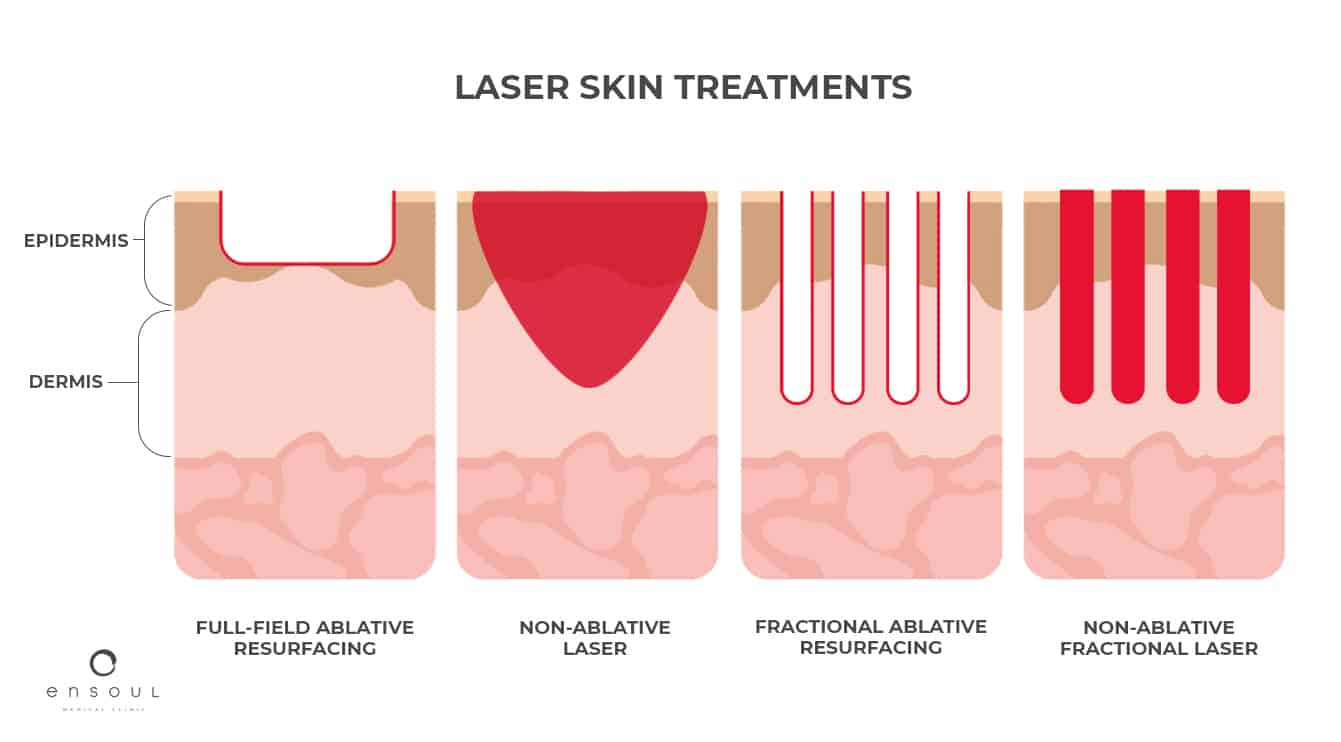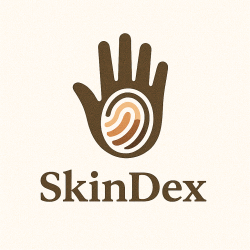
Providing a diverse plethora of skin benefits, laser treatments have revolutionized dermatology and have skyrocketed in popularity, with roughly 4 million laser skin treatments being performed annually. This surge in demand can be attributed to their ability to effectively address a variety of skin concerns: acne scars, wrinkles, hyperpigmentation, and unwanted hair. Offering precision and long-lasting results, laser treatments work in a very fascinating and non-invasive manner.
The significance of collagen
Before exploring the various types of laser treatments for the skin, it’s essential to understand why they’re effective: they stimulate collagen production — a key factor in maintaining youthful, healthy skin. Collagen is the most abundant protein in the human body and forms the structural framework of the skin. It interacts with other molecules like hyaluronic acid to provide firmness, elasticity, and hydration. As we age, natural collagen production declines, leading to wrinkles, sagging, and thinning skin. To combat this, laser treatments can be used to trigger fibroblasts to produce more collagen, consequently rebuilding smoother skin.
Laser resurfacing:
One of the more popular laser treatments, laser resurfacing is a technique that uses ablative lasers, non-ablative lasers, or fractional lasers. Ablative lasers (eg: CO₂) cast a beam of light that destroys the protective keratin on the epidermis—the outer layer of the skin—and heats the underlying skin—dermis. Ablative lasers emit energy at a wavelength of around 10,600 nm. In response, the body stimulates collagen growth to regrow the targeted wound. Once fully healed, the treated area returns smoother—free of sun damage and wrinkles. Ablative lasers are the most effective/intense laser option, requiring longer recovery time while providing the most drastic results.
Types of ablative lasers
CO₂ and Er:YAG lasers are the most commonly used ablative lasers, each with distinct advantages and applications. CO₂ lasers, operating at a high wavelength of ~10,600 nm, penetrate deeply into the skin, making them highly effective for severe sun damage, deep wrinkles, acne scars, and skin tightening. In contrast, Er:YAG lasers, with a moderate wavelength of ~2940 nm, offer more precise and controlled resurfacing, making them ideal for treating mild to moderate wrinkles, fine lines, and sun damage while minimizing heat damage.
Non-ablative lasers
If you seek a more gentle procedure with a shorter recovery time, non-ablative lasers would be a more suitable option. Unlike ablative lasers that both vaporize the epidermis and heat the dermis, non-ablative lasers do not create a wound on the surface, only heating the dermis. Non-ablative lasers operate at a marginally lower wavelength, typically between 1320 nm – 1927 nm. This still stimulates collagen production, but more gradually/gently.
Both ablative and non-ablative lasers can alternatively be offered fractionally instead of full-field. Fractional ablative/non-ablative lasers create microscopic wounds on the skin, leaving the surrounding skin intact. It should be noted that this fractional approach maintains the same wavelength as its full-field counterpart, but the delivery of the laser energy is different. Fractional lasers allow for reduced downtime and faster healing. It still effectively stimulates collagen production, though the results tend to be more gradual compared to full-field treatments.
Pigmentation & spot removal lasers
Similarly to laser resurfacing, pigmentation lasers also target and treat sun spots and pigmentation; however, they are a targeted treatment specifically designed to break down melanin without affecting the surrounding skin. The significantly low wavelength of pigmentation lasers—between 532 nm and 1064 nm—enables pinpoint accuracy for melanin to more effectively absorb laser energy. Unlike resurfacing lasers, which also improve skin texture, wrinkles, and scars, pigmentation lasers focus solely on degrading pigmentation, making them ideal for treating sunspots, freckles, melasma, and hyperpigmentation. It’s important to note that pigmentation lasers do not strongly stimulate collagen production, as they do not heat the dermis and trigger fibroblasts to produce new collagen.

Takeaway:
Ultimately, if your skin concern is solely moderate pigmentation and sun damage, pigmentation & spot removal lasers would be a better choice. These lasers operate at a low wavelength, ensuring minimal downtime, targeted melanin degradation, and reducing damage to surrounding tissue. If you wish to also treat scarring/texture or severe sun damage, resurfacing lasers (ablative/non-ablative) would be more suitable, as their potency stimulates collagen production and promotes new and smoother skin.
Bibliography
Cambridge Laser Clinic. “Detailed Explanation of Pigment Laser Treatments.” Cambridge Laser Clinic, https://cambridgelaserclinic.com/laser-treatments/pigment/detailed-explanation/#:~:text=Several%20different%20laser%20wavelengths%20can,(Nd%20Yag%201064nm%20laser). Accessed 2024.
“Laser Resurfacing.” Mayo Clinic, https://www.mayoclinic.org/tests-procedures/laser-resurfacing/about/pac-20385114#:~:text=Results%20after%20nonablative%20laser%20resurfacing,treatments%20to%20get%20noticeable%20results. Accessed 2024.
“Laser Light Energy-Based Procedures in the U.S. by Type.” Statista, https://www.statista.com/statistics/319224/distribution-of-laser-light-energy-based-procedures-in-the-us-by-type/. Accessed 2024.
RCSB Protein Data Bank. “Collagen Structure.” Protein Data Bank, https://pdb101.rcsb.org/motm/4. Accessed 2024.
“Lasers in Dermatology and Medicine.” National Center for Biotechnology Information, https://www.ncbi.nlm.nih.gov/books/NBK557474/. Accessed 2024.
Rokhsar, C. K., and Fitzpatrick, R. E. “The Treatment of Wrinkles and Skin Laxity Using a Fractional Ablative CO₂ Laser: A Retrospective Study.” National Center for Biotechnology Information, https://pmc.ncbi.nlm.nih.gov/articles/PMC3580982/. Accessed 2024.
The Ferguson Clinic. “Which Is Better? Erbium YAG Laser vs. CO₂ Laser.” The Ferguson Clinic, https://www.thefergusonclinic.com/which-is-better-erbium-yag-laser-vs-co2-laser/. Accessed 2024.
Full Potential Men. “Laser Pigmentation Removal.” Full Potential Men, https://www.fullpotentialmen.com/laser-pigmentation-removal/. Accessed 2024.
